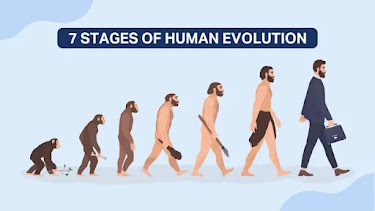1. GREENHOUSE GASES: These are a major driver of climate change. These gas emissions continued to increase in 2022. The big 3 Greenhouse gases are
a. Carbon Dioxide air
concentration 415.7 PPM =149% of pre-industrial level.
b. Methane air
concentration 1908 PPB = 262% of pre-industrial level.
Methane traps 25 times more heat in the atmosphere than carbon dioxide. The Methane increase figures for 2022 are unavailable, but in 2021 it went up by 18 PPB, the highest increase ever. That is almost a 1% hike in a single year.
Methane emissions come from both humans and natural
sources. Of the natural sources, the wetlands are one of the biggest
contributors.
c. Nitrous Oxide air concentration 334.5 PPB = 124% of pre-industrial level
2. GLOBAL SURFACE MEAN TEMPERATURE: In 2022 the planet was warmer by 1.15 degrees than the pre-industrial (1850-1900) average. The last 8 years are the warmest on re cord.
Despite the cooling on account of La Nina conditions, 2022 was the 5th or 6th warmest on record.
3. PRECIPITATION: In 2022, large areas with above-normal precipitation included large parts of Asia, the West Pacific, North & South America, the Caribbean, the Eastern Sahel region, South Africa, Sudan, and Eastern Europe.
Deficit precipitation occurred in Western & Central Europe, Northwest Africa, parts of the Middle East, Central Asia, Himalayas, Eastern Africa, Madagascar, Central & South America, Central & western North America.
4. OCEAN HEAT CONTENT: Around 90% of the excess energy that accumulates in the earth system due to increasing concentrations of greenhouse gases goes into the ocean. Ocean heat content measures how this energy warms the ocean at various depths down to 2000 Mtrs deep. It is accepted that the ocean will continue to warm well into the future, which is irreversible. The ocean continued to warm in 2022.
Corals are vital for creating ecosystems in the oceans, serve as food for many creatures, protect the coastlines from erosion and storms, and can also be key tourist attractions. They are affected by the warming of the ocean.
As water warms, it also expands and rising ocean temperatures are a key contributor to rising sea levels around the globe.
5. SEA LEVEL RISE: The global sea level is rising for a number of reasons. Ocean warming, melting ice sheets & glaciers all contribute to overall rise. The sea has risen about 3.4 mm per year over the past 30 years. That means a total of about 10 centimeters during the period.
6. OCEAN ACIDIFICATION: The ocean absorbs around 25% of the CO@ emission into the atmosphere which would decrease the quantity of CO2 in the atmosphere and helps in reducing the quantum of the greenhouse effect. However, this would be at the cost of high ecological cost to the ocean.
CO2 reacts with water and increases its acidity which endangers organisms, fish, and other marine animals. It also affects the coastal protection offered by Coral reefs by weakening them. As the acidity of the ocean increases, its capacity to absorb CO2 from the atmosphere declines. The global ocean acidity is increasing at a faster pace now than it did in the last 26000 years.
7. SEA ICE EXTENT: Changes in global temperature also affect bodies of ice both on land and at sea. The ice extent of the Arctic sea was below the long-term average in most months of the year 2022. The September extent was 0.71 million Sq Km. below the long-term average.
The Antarctic sea ice extent dropped to the lowest level on record on Feb 22 , it was down by 1 million sq. Km below the long-term (1991-2020) average.
The Greenland ice sheet ended with a negative mass balance for the 26th year in a row.
Glaciers are found all over the world in high mountain ranges. They are formed from snow that had compacted into ice, which then flows downhill to lower warmer altitudes where it melts.
As glaciers shrink there is a significant and direct impact on global climate. 40 important glaciers are monitored by the Glacier Monitoring Service to estimate the glacier mass balance. Since 1950, the glaciers are continually losing mass each year. In the year 2022 Glaciers lost 1.2% of their thickness. This is named as mass water equivalent.
Shockingly the glaciers in the Swiss alps have shrunk by 6.2% in the year 2022 alone.
Rising global temperatures have
contributed to more frequent and severe extreme weather events around the
world, including heat and cold waves, floods, droughts, wildfires and storms.




